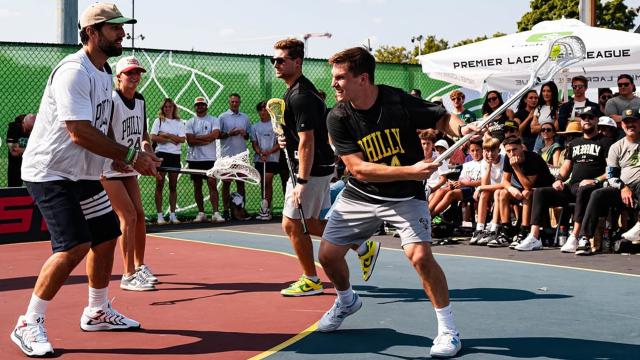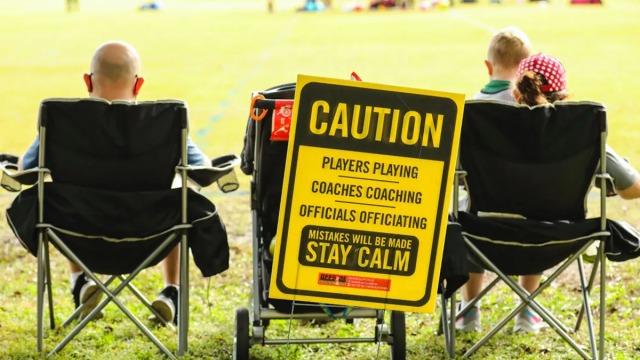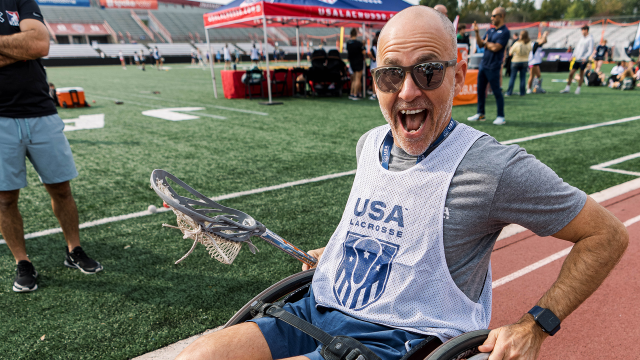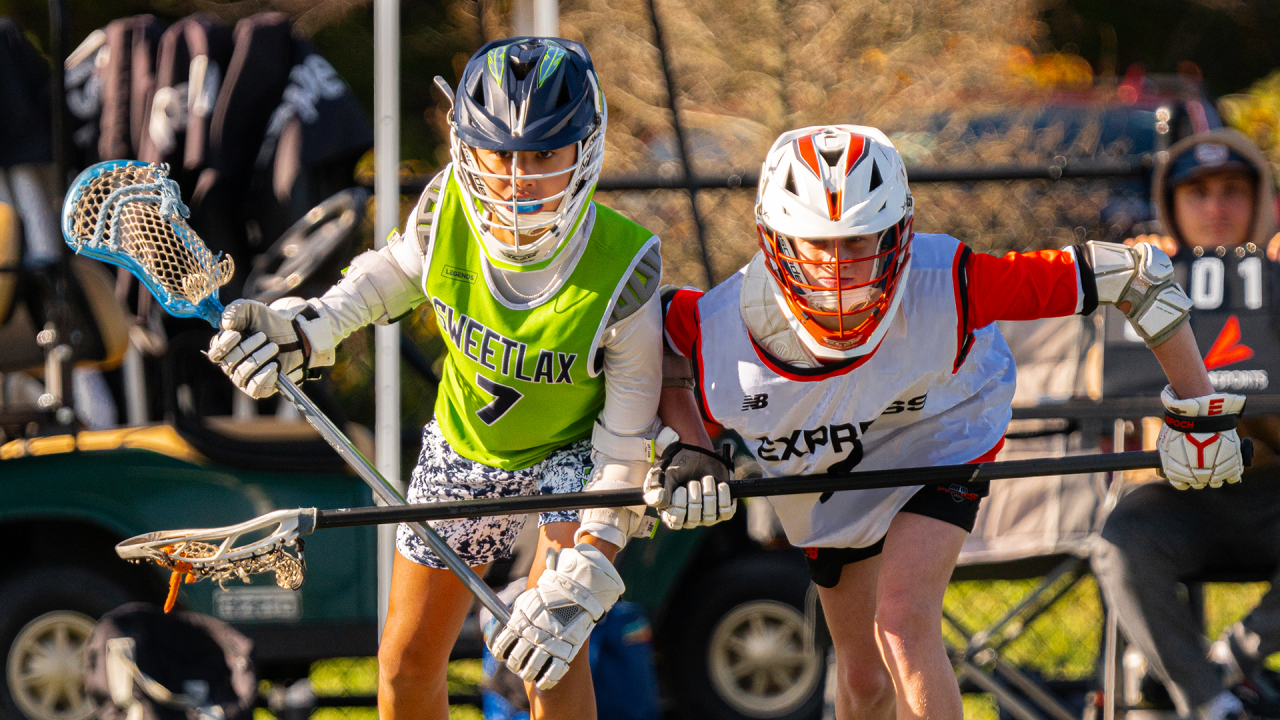
Weekly Cover: Why Age Verification Makes Youth Lacrosse Better for Everyone
Derek Reinhold sat in his car while his oldest son, Alexander, practiced with the Junior Waterdogs team ahead of the PLL Junior Championships round robin earlier this month.
While sitting there, the North Wales, Pa., resident completed USA Lacrosse’s age verification for his younger son, Dimitrios.
Reinhold opened his USA Lacrosse account on his phone and scrolled to Dimitrios’ profile.
He clicked “Edit Age Verification.”
He loaded a saved image of Dimitrios’ birth certificate.
It took less than 90 seconds.
Age verification became required for all USA Lacrosse player members on July 1, 2024. Player members have until July 1, 2025, to become compliant or they will lose their active member status and associated benefits. Any player registering for USA Lacrosse membership or renewing their membership before then will be prompted to complete the quick and easy age verification steps.
A free service for active members of USA Lacrosse, age verification comes from a single, trusted source and is universally accepted regardless of where a player competes. It ensures that players participate safely and with integrity and enhances the overall experience.
“Showing up to a tournament wherever the kids are age verified and within their classifications is a trusted experience for the athletes themselves, the coaches, the parents and the officials,” USA Lacrosse CEO Marc Riccio said. “Nobody wants to show up to a tournament and find out that kids might be not the age they think they are, the classifications are all disproportionate, and you’re playing a team that is a full two-plus years older than your team and you’re overmatched. The quality of that experience is good for nobody, even the winning team. That’s not great lacrosse.”
Reinhold received confirmation that Dimitrios’ age verification was approved within minutes, although USA Lacrosse cautions it can take up to two business days. A player’s submitted proof-of-age document is deleted securely after verification so it is not compromised in any way. Age verification carries through for the remainder of a player’s career. If they are an active member, it never has to be done again.
“It’s going to be a positive because it’s needed in youth sports,” Reinhold said. “And lacrosse is probably one of the bigger culprits.”
Both Alexander, 12, and Dimitrios, 11, started playing for the North Penn Dragons recreation league when they were in third grade and now also play for True Lacrosse club. They have both played up, but they’ve also run into players much bigger, and seemingly older, while playing within their age classification.
“It was scary,” said Dimitrios, a 2031.

People should be asking their coaches and their program what they do to guarantee fair and equitable play and a great experience for the kids.
USA Lacrosse CEO Marc Riccio
Age verification can help alleviate those fears by ensuring that players are in the proper divisions. For the same peace of mind, recreation leagues and event organizers also are encouraged to use the USA Lacrosse age verification product as a free tool. The National Lacrosse Federation partnered with USA Lacrosse over the past year to require that their boys be USA Lacrosse members and age verified for all age groups 14 and under.
“Lacrosse at the club level has been the Wild West for quite a few years, people doing whatever they wanted to do,” said Harry Jacobs, USA Lacrosse’s regional director for the Northeast.
Jacobs was often on-site at tournaments this summer examining rosters to double check ages and then helping to raise awareness of the requirement for those that had not yet completed it. Regional directors and event officials could compare registered rosters against the players on a team.
“Everybody’s been fine with it because it’s just such an easy process from a program leader or even tournament operator perspective,” said Lyn Porterfield, the Pacific and Mountain regional director. “It’s really easy to verify it on our end. They go into their roster management tool — we call it a program leader portal — and as long as the kids are loaded into that system, they can easily see which are age verified and which are not.”
The biggest hurdle has been making sure every family received communication about the new requirement and then followed through with signing up. Clubs and leagues spread the word more effectively in the spring.
“We haven’t really had any issues,” Team 91 director George Breres said. “There’s been buy-in from the participants, from the registerers and the directors that are signing up for these events. They’ve submitted their rosters. They get into the system. We’re able to pull the reports, and there hasn’t been too much we’ve had to communicate back to people saying they were non-compliant.”
Age verification also is being welcomed at the recreation level.
Emily Anderson, president of Milwaukee Area Youth Lacrosse (MAYL), is looking forward to implementing the requirement next spring. MAYL has had complaints in their league about players moving down to younger age groups, and they haven’t previously had the best tools to address it onsite.
“This is coming at a great time for us because of some of those issues,” Anderson said. “I wasn’t quite 100 percent sure how we were going to solve them. It will help us curtail that big time.”
USA Lacrosse first developed an age verification product in 2016. Just as sports like soccer and hockey have required age verification, USA Lacrosse first implemented it Sept. 1, 2017, part of a movement then to ensure a good experience for all participants. It also helped align age-appropriate rules and skills with the newly introduced Lacrosse Athlete Development Model.
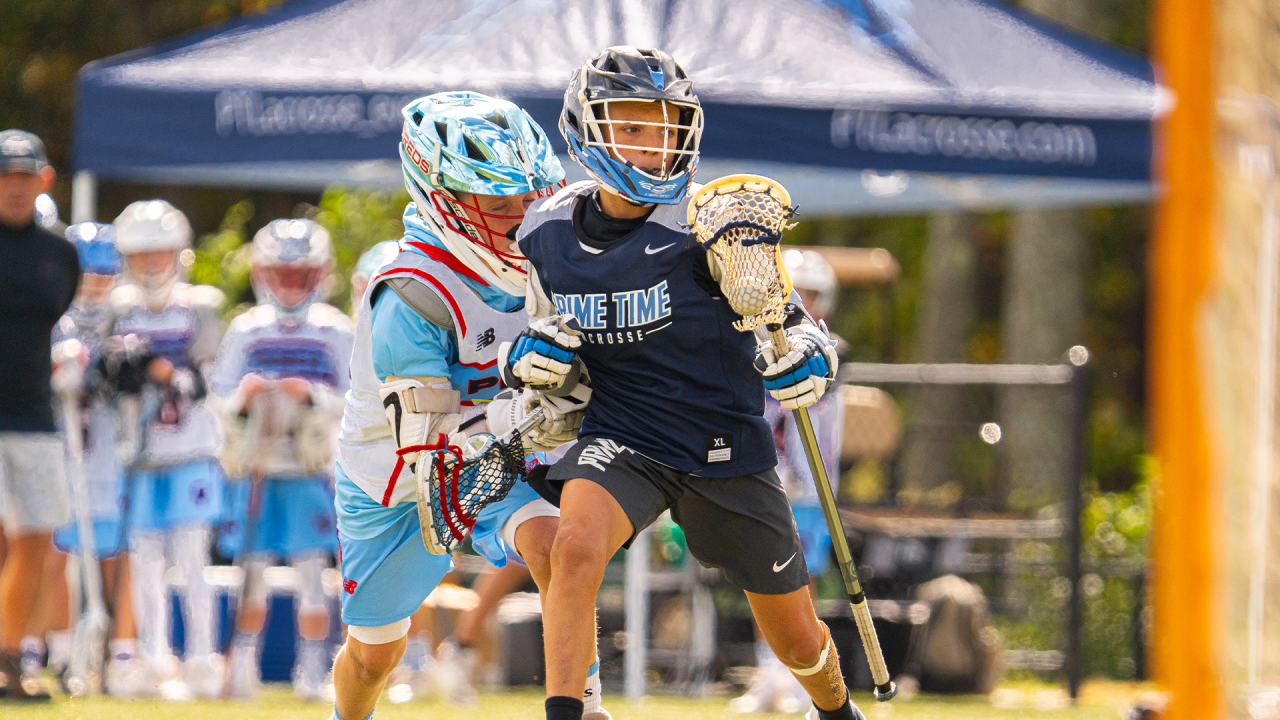
Age verification came as part of an age segmentation policy in which players were encouraged to be grouped into 12-month spans rather than by grades, with allowances for up to 24 months. Many boys’ events utilized a 15-month policy this summer to help minimize roster disruptions. The age spans are important for competitive fairness and safety.
“When you add puberty as a factor, a 13-year-old versus a 10-year-old or 11-year-old or whatever it is, you can see your age gap could be a really big deal,” Reinhold said.
USA Lacrosse age verification is accepted universally around the country. And because it is something many families already are accustomed to from other sports, lacrosse leaders hope it isn’t long before it becomes routine for leagues, clubs and tournaments everywhere.
“There’s lots of other sports in the youth realm where parents are very used to submitting a birth certificate when they first register their kid,” Porterfield said. “We haven’t gotten any pushback. It’s been very, very positive. People are all in, and they understand the reasoning behind it, that we want to make sure that kids are playing in the proper age group.”
Digital membership cards will add mobility and convenience for members, who can verify a player’s age on the spot.
“What lacrosse is trying to do in terms of age verification is great,” said Tracey Cantabene, director of events and operations at Madlax. “From an event organizer standpoint, the change of having people age verify when they renew or join is huge because it wasn’t happening, and it was just such a big issue. There’s a lot of education involved with it.”
The focus for now is on boys’ lacrosse, but Jacobs said there’s growing interest in adding age verification for girls’ lacrosse as well, especially with tournaments that have players crossing regions. The new age verification requirement for USA Lacrosse player members applies to all ages and genders to allow simpler implementation for event operators to use the service.
“We’ll know what all the hurdles and the pitfalls were, and we’ll know what to watch out for when we try it on the girls’ side,” Jacobs said.
More athletes ages 9 and younger are playing lacrosse than ever before, Riccio said. The new age verification policy can keep them playing lacrosse as the sport falls in line with the best practices of other youth sports.
“People should be asking their coaches and their program what they do to guarantee fair and equitable play,” he said, “and a great experience for the kids.”
Justin Feil
Justin Feil grew up in Central PA before lacrosse arrived. He was introduced to the game while covering Bill Tierney and Chris Sailer’s Princeton teams. Feil enjoys writing for several publications, coaching and running and has completed 23 straight Boston Marathons. Feil has contributed to USA Lacrosse Magazine since 2009 and edits the national high school rankings.

Categories
Related Articles
